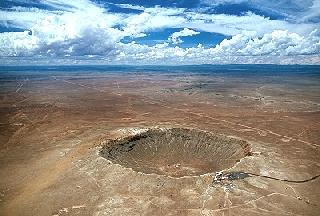
WASHINGTON (PTI): Scientists have discovered what they say is the oldest and largest meteorite crater on Earth which is believed to have formed some three billion years ago.
The crater found near the town of Maniitsoq in Greenland currently measures about 62 miles (or 100 km) from one side to another. But before it eroded, it was likely more than 500 km wide, which would make it the biggest and oldest crater ever, found on Earth, said Danish researcher Adam Garde.
Calculations suggest that the crater was caused by a 30km-wide meteorite, a massive one which if hits Earth today would wipe out all higher life, Garde told OurAmazingPlanet.
In the three billion years since the impact, the land has been eroded down to about 25 km below the original surface.
But the effects of the intense shock wave and heat penetrated deep into the Earth, and remain visible today, said Garde, a researcher at the Geological Survey of Denmark and Greenland.
Garde had been conducting research on Greenland's geology and noticed several strange features that didn't make sense.
In September 2009, he came up with the extreme explanation of an impact from a meteorite.
His team collected samples over the years and published the results in the current issue of journal Earth and Planetary Science Letters. He's now "100 per cent positive" it's a crater, for several reasons, he said.
For one, he found widespread crushed rocks in a circular shape that seemed to be caused by the shock waves of a massive impact. Second, there are deposits of a melted mineral called K-feldspar (or potassium-feldspar) that could have been liquefied only at extremely high heat, like that caused by anmeteorite's crash-landing.
There's also widespread evidence of weathering by hot water, which he thinks was caused by the ocean rushing into the crater after it struck the area. The area may have been covered by a shallow ocean at the time, but even if it wasn't, it doesn't matter, Garde said.
"The crater from a meteorite that big would have caused the sea to rush in," he said.
Before this discovery, the oldest crater was thought to be the Vredefort crater in South Africa, estimated to be two billion years old. At 186 miles (300 km) wide, it's also the largest crater that remains visible. Scientists expect that there were many more craters formed around three-four billion years ago when Earth lacked a protective atmosphere.
 Previous Article
Previous Article Next Article
Next Article













The Indian Air Force, in its flight trials evaluation report submitted before the Defence Ministry l..
view articleAn insight into the Medium Multi-Role Combat Aircraft competition...
view articleSky enthusiasts can now spot the International Space Station (ISS) commanded by Indian-American astr..
view article